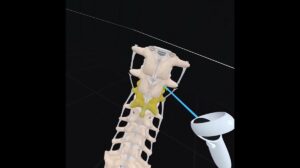NEW YORK (Reuters Health) – On May 8, a panel of advisers to the US Food and Drug Administration unanimously voted against rilonacept (Arcalyst, Regeneron Pharmaceuticals) for use in gout prevention, based on studies that only tested the drug for 16 weeks.
Complete data for one of those trials, the PRESURGE-1 trial, are now available online in Arthritis Care & Research. The study found that rilonacept markedly reduced the occurrence of gout flares in patients initiating uric acid-lowering therapy (ULT).
By reducing flares during the first months after ULT, rilonacept “may have the potential to improve long-term control for some patients by improving adherence to ULT,” first author Dr. H. Ralph Schumacher, Jr., of the VA Medical Center and University of Pennsylvania, Philadelphia and colleagues conclude.
Rilonacept is currently approved in the U.S. and Europe for treatment cryopyrin-associated periodic syndromes, a group of rare diseases that share with gout an underlying inflammatory-mediated excess production of IL-1.
ULT remains the foundation of long-term treatment of gout. However, the occurrence of treatment-associated gout flares early in treatment may contribute to low rates of adherence to ULT.
Several lines of evidence suggest that the interleukin-1 (IL-1) is a major factor in gout and blocking this pro-inflammatory cytokine early may help. The phase 3 PRESURGE-1 trial was performed to confirm the efficacy and safety of rilonacept for prevention of gout flares seen in phase 2 testing. The PRESURGE-1 trial was funded by Regeneron Pharmaceuticals and two of the investigators are employees of the company.
A total of 241 adults with a history of at least two gout flares in the past year and serum urate concentration of at least 7.5 mg/dL were enrolled at 64 centers in the US and Canada. They were initiated on allopurinol 300 mg/day and randomly assigned to 16 once-weekly subcutaneous injections of placebo or rilonacept (80mg or 160mg), with a double loading dose on the first day. Allopurinol was titrated to lower serum urate below 6.0 mg/dL.
The proportion of patients using rescue medication (NSAIDs or oral glucocorticoids) for a gout flare throughout the study was significantly higher for placebo (54.4%) than for rilonacept 80 mg (25.0%) and 160mg (23.5%) (p<0.001 for both rilonacept groups versus placebo).
At 16 weeks, mean uric acid levels were similarly reduced in the three groups (all below 6 mg/dL). However, the rilonacept 160mg group numerically had the highest proportion (76.8%), followed by placebo (69.0%) and rilonacept 80mg (66.7%), the authors report.
The cumulative number of gout flares over 16 weeks was 84 with placebo, compared with 23 with rilonacept 80mg, and 17 with rilonacept 160mg. The mean number of gout flares per patient with rilonacept 80mg and 160mg was 0.29 and 0.21, respectively, a statistically significant 73% and 80.0% reduction, respectively, compared with placebo (1.06). The numbers needed to treat for a reduction of at least one gout flare were 1.3 and 1.2 for rilonacept 80mg and 160mg, respectively.
In addition, significantly lower proportions of patients reported one or more gout flares with rilonacept 80mg (18.8%) and 160mg (16.3%) relative to placebo (46.8%) (both p<0.001).
The incidence of adverse events was generally balanced between the groups, except for injection site reactions which occurred significantly more often in patients taking rilonacept 80mg and 160mg vs placebo (8.8% and 19.8% vs 1.3%).
Despite, these data, the FDA advisory panel felt the efficacy and safety data, at this time, do not support the approval of rilonacept for prevention of gout flares during the initiation of ULT in patients with gout. Some panel members were uneasy about the drug being tested only for 16 weeks, when in real life they’d likely be taking it for much longer. Others, however, indicated that they do believe it has a role in treating gout flares.
In their report, Dr. Schumacher and colleagues note that gout has “one of the lowest rates of medication adherence relative to patients with hypertension, osteoporosis, or selected metabolic disorders; approximately 50% to 75% of patients become non-adherent during the first year of therapy. It is likely that gout flares occurring during initiation with ULT may contribute to this poor adherence.”
Despite the FDA advisory panel’s rebuff of rilonacept for gout prevention, the study team says the there is a need for gout flare preventive agents and rilonacept has demonstrated potential benefits in this regard.
Peter Dworkin, vice president for Corporate Communications at Regeneron Pharmaceuticals, told Reuters Health, “We are disappointed by the (FDA) Advisory Committee recommendation and are in communication with FDA on our application. We also have a longer-term (56 week) safety study that began last year.”
SOURCE:




